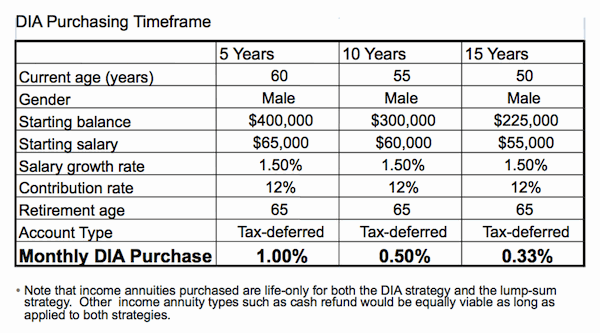
Gradual versus Lump-Sum Annuitization: The Jury is Still Out
A study by a unit of Fidelity Investments showed that it is premature to recommend a gradual, fixed percentage-of-assets monthly annuity purchase as an option in retirement plans, because the strategy would lead to widely different outcomes based on luck and timing.



